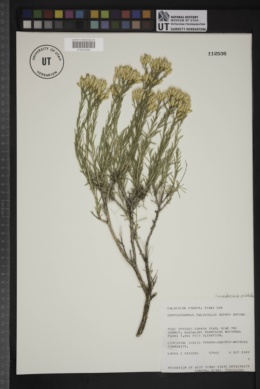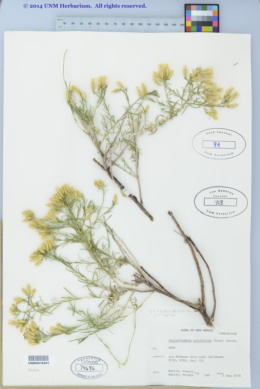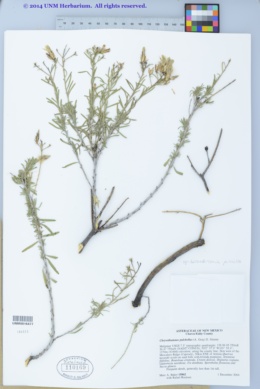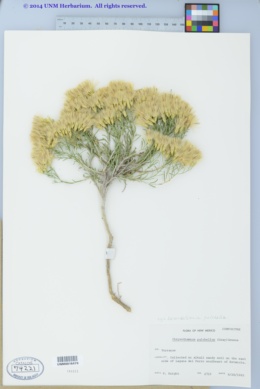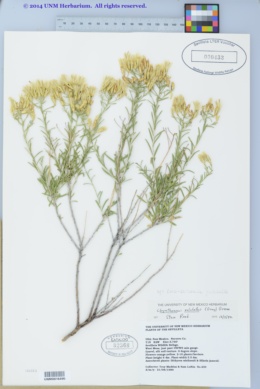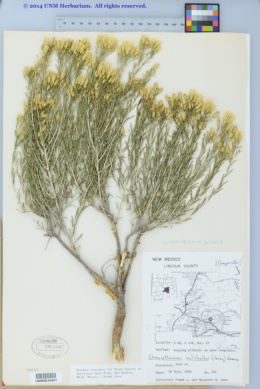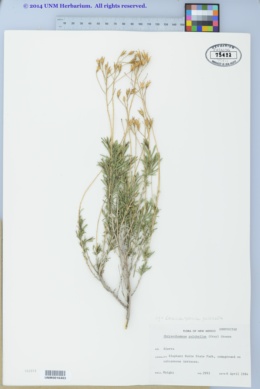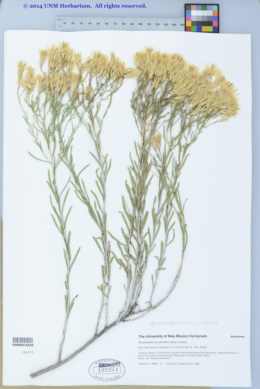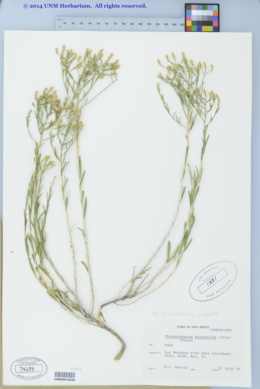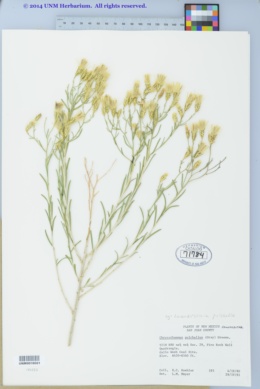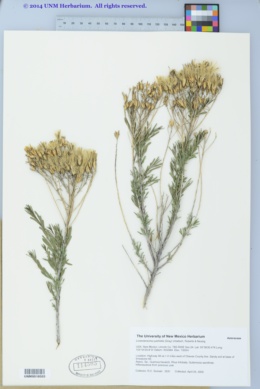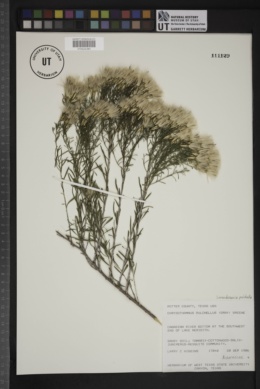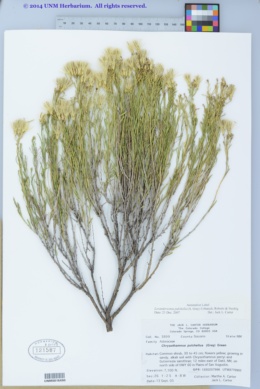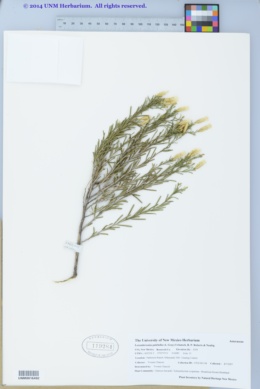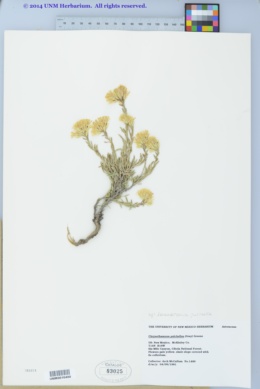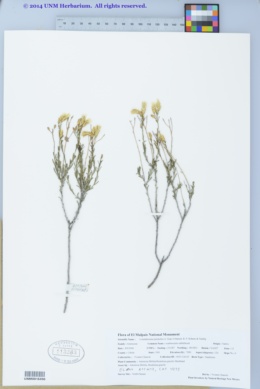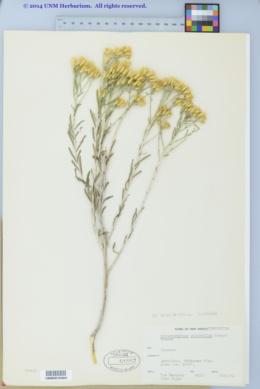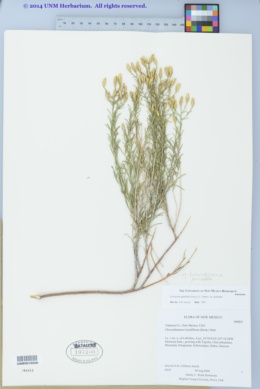Lorandersonia pulchella
|
|
|
|
Family: Asteraceae
Southwestern False Geesewood
[Bigelowia pulchella (A. Gray) A. Gray] |
Shrubs, 80-120 cm. Stems single, greenish when young, becoming whitish to gray, fastigiately branched distal to middle (angled from leaf bases), glabrous. Leaves ascending to appressed; blades linear or linear-oblong, 10-40 × 1-2.5 mm, planar or adaxially concave, margins eciliate, midveins evident, apices acute to acuminate, faces glabrous. Heads in cymiform to corymbiform arrays 0.5-14 cm wide, sometimes borne singly. Involucres obconic to cylindric, 10-12 × 4-6 mm. Phyllaries 24-30 in 4-5 series, in 5 vertical ranks, mostly tan, green subapical patch shiny, midnerves evident in distal 1 / 2 , keeled, ovate to oblong or lanceolate, 1.3-9 × 0.7-2 mm, unequal, mostly chartaceous, margins narrowly scarious, entire apices acute to attenuate or acuminate, faces glabrous. Receptacles with 0-2 scales ca. 0.5 mm. Ray florets 0. Disc florets 5; corollas 9-12 mm, glabrous, lobes 1-1.5 mm; style branches 4.5-6 mm, appendages attenuate, 1.7-2.5 mm. Cypselae brownish, turbinate, sharply 4-angled, 4.5-6.3 mm, 5-8 ribbed, faces glabrous or sparsely hairy; pappi yellowish tan (± flattened, barbellate), 9-11 mm. 2n = 18. Flowering late summer-fall. Dry hills and plains, often sandy sites; 1500-2000 m; N.Mex., Tex.; Mexico (Chihuahua). FNA 2006, Allred and Ivey 2012 Duration: Perennial Nativity: Native Lifeform: Shrub General: Shrubs, 80-120 cm tall; stems greenish when young, becoming whitish to gray, fastigiately branched (parallel branching which gives a broom-like appearance), glabrous. Leaves: Alternate along the stems, ascending to appressed; blades linear or linear-oblong, 1-4 cm long and 1-3 mm wide, flat, glabrous, with pointed tips and evident midveins. Flowers: Flower heads discoid and yellowish, usually arranged in cymiform to corymbiform arrays up to 14 cm wide; involucres obconic to cylindric, 10-12 mm high and 5 mm wide, the bracts (phyllaries) 20-25 per flower head in 5 strongly graduated series, mostly tan and shiny with a green spot below the tip; florets all discs, 5 per flower head, the corollas 9-12 mm high, yellow. Fruits: Achenes brownish, turbinate, 5 mm long, sharply 4-angled, 5-8 ribbed, and glabrous or sparsely hairy; topped with a pappus of yellowish tan bristles, these 1 cm long. Ecology: Found on dry hills and plains, sand dunes, and other open sandy sites, mostly below 7,200 ft; flowers late summer and fall. Distribution: NM and TX; south to Chihuahua, MEX. Notes: Lorandersonia is a Chrysothamnus segregate and could easily be mistaken for a member of that genus. This species is distinguished by due to the lack of glands on the leaves and stems; the small, mostly flat leaves only a couple cm long and up to 3 mm wide; the single vein visible on the underside of each leaf; the 1 cm long pappus of bristles attached too each seed; and the shrub's relatively short stature, under 1 m tall. It is nearly identical to L. baileyi and sometimes treated as the same species; however there is molecular evidence that the two species are not sister taxa, and therefore treated as distinct species in the Flora of North America. To tell the two species apart, use your hand lens and look at the leaf margins. L. baileyi has minutely ciliate margins and L. pulchella has entire margins. Ethnobotany: Unknown Etymology: Lorandersonia honors Chrysothamnus enthusiast Loran C. Anderson, (1936- ); pulchella is Latin for little. Editor: AHazelton 2017 |































